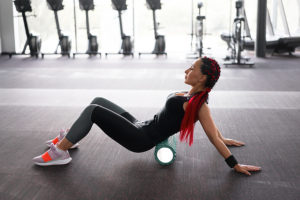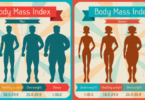As we grow older, the challenge of achieving restful sleep often becomes more pronounced. I’ve noticed this in my own life, with my fitness tracker indicating that I average about five to six hours of sleep each night. The National Sleep Foundation’s research suggests adults require 7–9 hours of uninterrupted sleep, yet 30% of those over 45 years old are getting six hours or less. This issue is even more prevalent among seniors over 65 and 75, with many reporting their sleep isn’t as rejuvenating as it used to be.

Historically, sleep duration has decreased; adults in 1942 averaged 7.9 hours, which dropped to 6.8 hours by 2013, and further declined to under six hours by 2020. While it’s easy to blame modern distractions like television and electronic devices, finding a solution is more beneficial than assigning fault. Instead of reaching for medication, which is a common response but carries risks, especially for seniors, consider alternative methods.
Alternative to Medication: Foam Roller Massage
One promising approach is using a foam roller for self-massage before bedtime. This method, akin to movement meditation, can help achieve a state of deep relaxation conducive to quality sleep. Spending ten minutes with a foam roller allows you to use your body weight to massage and release tension in your muscles, promoting physical and mental relaxation without the need for a professional masseuse.
For those new to foam rolling, it’s advisable to start gently due to initial discomfort from muscle tension. Gradually increase the intensity as your body adapts. You can find instructional videos online to guide you through the process, focusing on different body parts such as the back, legs, shoulders, and arms.

Foam rolling is a great way to self-massage and release muscle tension. Here are the steps to perform a foam roller massage effectively:
- Select the Right Roller: Choose a foam roller that suits your comfort level—softer rollers for beginners and firmer ones for more intense massage. Amazon Foam Roller
- Start with Your Legs:
- Sit on the floor with your legs extended and place the roller under your calves.
- Lift your body so your weight is on the roller.
- Slowly roll from the calves up to the hamstrings, pausing on any tight spots.
- Move to Your Back:
- Lie down with the roller under your lower back.
- Support your head with your hands and keep your knees bent and feet flat on the floor.
- Gently roll from the lower to the upper back, avoiding the neck.
- Roll Your Arms and Shoulders:
- Place the roller under your arm while lying on your side.
- Slowly roll from your armpit down to your elbow.
- Repeat on the other arm.
- Include Your Hips and Glutes:
- Sit on the roller and cross one ankle over the opposite knee.
- Lean into the hip of the crossed leg and roll back and forth.
- Switch sides after a minute.
- Don’t Forget the Sides:
- Lie on your side with the roller under your hip.
- Roll along the side of your thigh, stopping at any sore points.
- Use Proper Technique:
- Roll slowly and focus on areas of tension.
- Spend about 30 seconds to a minute on each muscle group.
- Breathe deeply and consistently to help relax your muscles.
- Be Mindful of Pain:
- It’s normal to feel some discomfort, but it shouldn’t be unbearable.
- If a spot is too painful, ease off and work around it.
- Finish with a Stretch:
- After rolling, perform some gentle stretches to further improve flexibility.
Remember to listen to your body and adjust the pressure accordingly. Consistency is key, so try to incorporate foam rolling into your routine several times a week for the best results. For visual guidance, you can find many instructional videos online that demonstrate these techniques123.
Good Sleep Practices
In addition to foam rolling, adopt good sleep hygiene practices:
- Disconnect from electronics well before bedtime to allow your mind to unwind.
- Deep breathing exercises can help slow down your thoughts and prepare your body for rest.
- Consider using calming music or meditation apps to create a serene environment.
- Ensure your sleeping space is comfortable, with a cool temperature and minimal light and noise.
By combining physical relaxation techniques with a conducive sleep environment, you can enhance your chances of a restful night’s sleep, leading to improved overall well-being. Remember, a calm body and mind are essential for letting go of the day’s stress and embracing a peaceful slumber.





